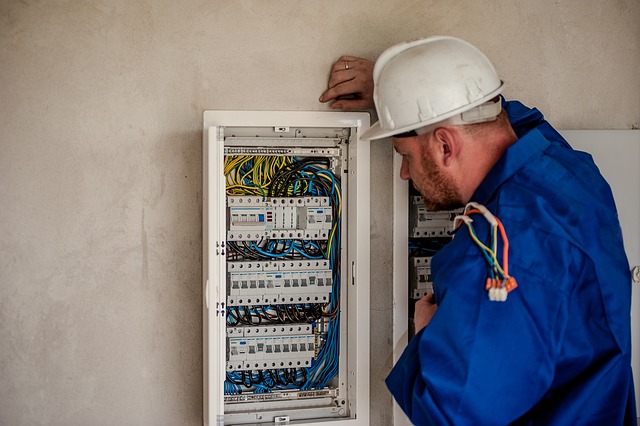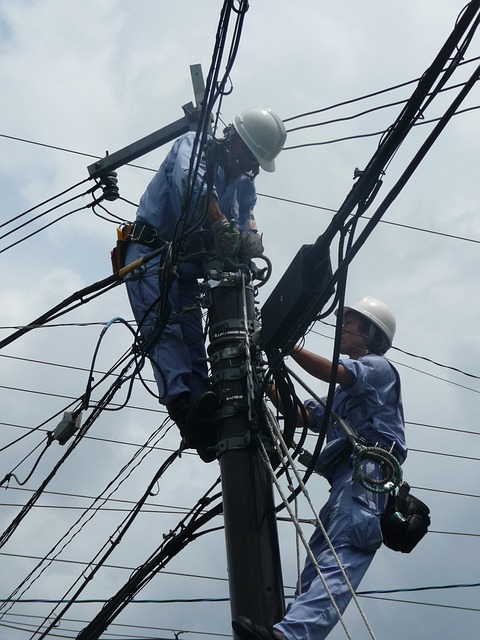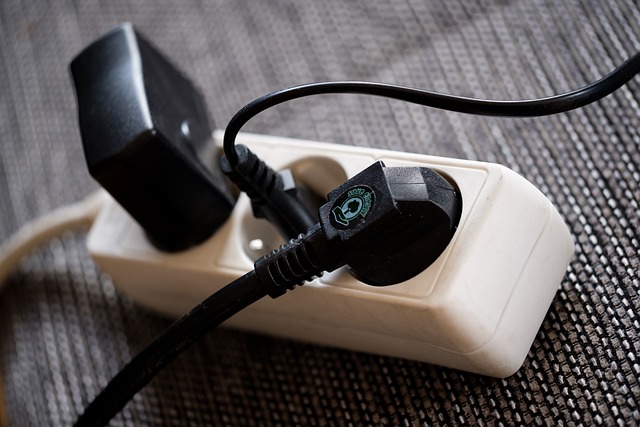
When it comes to electricity, safety should always be your top priority. The power of electricity cannot be underestimated, as even the slightest mistake can lead to disastrous consequences.
Common Electrical Hazards
Effectively navigating the domain of electrical safety requires an understanding of the inherent hazards that lie within electrical systems.
Electrical Shock
Electrical shock is a significant electrical hazard that can result in severe injury or even death. Understanding its causes, effects, and taking appropriate first aid measures is crucial. Electrical shocks occur when a person comes into contact with an energized electrical source. Common causes include faulty wiring, damaged appliances, improper use of electrical equipment, and wet conditions. The effects of electrical shock can range from mild discomfort to cardiac arrest or severe burns.
The severity of an electric shock can depend on various factors, including the voltage and current of the electrical source, the duration of exposure, the pathway the current takes through the body, and the individual’s overall health and resistance.
Recognizing the symptoms of electrical shock is essential for providing timely assistance. Symptoms may include burns, muscle contractions, difficulty breathing, and loss of consciousness. In the event of an electrical shock, it is vital to follow these first aid measures:
- Disconnect the power source if possible or turn off the main power supply.
- Call for emergency medical assistance.
- Do not touch the person directly while they are still in contact with the electrical source; instead, use a non-conductive object to separate them.
- Perform CPR (cardiopulmonary resuscitation) if the person is not breathing or their heartbeat has stopped.
Electrical Fires
Electrical fires pose a significant risk in homes, workplaces, and other settings. Understanding their causes, implementing preventive measures, and knowing how to respond effectively is essential. Electrical fires can be caused by various factors, including faulty wiring, overloaded circuits, malfunctioning electrical equipment, and improper use of extension cords. To prevent electrical fires, it is crucial to:

- Ensure proper installation and maintenance of electrical systems.
- Avoid overloading circuits and using extension cords as permanent solutions.
- Regularly inspect and replace damaged or frayed cords.
- Keep flammable materials away from electrical sources.
Response to Electrical Fires
Responding promptly and appropriately to electrical fires can save lives and minimize property damage. In the event of an electrical fire, follow these steps:
- Alert others and evacuate the area if the fire is spreading or uncontrollable.
- Activate the fire alarm and notify the fire department.
- Use a fire extinguisher specifically rated for electrical fires, aiming at the base of the fire.
- If the fire is too large to handle or the extinguisher is ineffective, evacuate immediately and wait for professional help.
Arc Flashes and Explosions
Arc flashes and explosions are sudden releases of intense energy that can cause severe injuries or fatalities. Understanding their dangers, implementing protective measures, and following safety protocols are crucial. They occur when an electrical current travels through the air, producing a brilliant flash of light and extreme heat. They can cause burns, blast injuries, hearing loss, and vision impairment. Understanding the risks associated with arc flashes is essential to mitigate their effects.
To prevent arc flashes, it is essential to implement the following protective measures:
- Perform regular maintenance and inspection of electrical equipment to identify potential faults.
- Follow proper electrical installation procedures, including proper grounding and bonding techniques.
- Use protective devices, such as arc fault circuit interrupters (AFCIs) and ground fault circuit interrupters (GFCIs).
- Provide appropriate personal protective equipment (PPE) to workers, including flame-resistant clothing, face shields, and insulated gloves.
If an arc flash incident occurs, it is vital to follow established safety protocols to minimize injuries and damages:
- Alert others and evacuate the area immediately.
- Restrict access to the affected area and post warning signs.
- Notify the appropriate authorities and contact emergency services.
- Provide medical assistance to injured individuals but avoid direct contact with affected areas.
- Investigate the incident to identify its root causes and take corrective measures to prevent future occurrences.

Electrical Safety Measures
Implementing general safety precautions is essential to create a safe environment when dealing with electricity. These precautions include:
Importance of Proper Training and Knowledge: Adequate training and knowledge are paramount in electrical safety. Individuals working with or around electricity should be well-informed about potential hazards, safe work practices, and emergency procedures.
Personal Protective Equipment (PPE): The use of appropriate personal protective equipment is crucial to mitigate the risk of electrical hazards. PPE may include insulated gloves, safety goggles, flame-resistant clothing, and footwear designed for electrical work.
Lockout/Tagout Procedures: Lockout/tagout procedures ensure that electrical equipment is de-energized and incapable of being inadvertently activated during maintenance or repair. This helps prevent accidental contact with live circuits, reducing the risk of electrical shock.
Electrical Installation
Proper installation of electrical systems is vital to minimize hazards. Consider the following measures:
Compliance with Electrical Codes and Regulations: Adhering to electrical codes and regulations ensures that installations meet established safety standards. This includes proper wiring, appropriate wire sizes, and correct placement of electrical components.
Proper Grounding and Bonding Techniques: Grounding and bonding help protect against electrical faults and minimize the risk of electrical shock. Ensuring a proper grounding system and bonding conductive components prevent electrical energy from flowing to unintended paths.
Use of Circuit Breakers, Fuses, and Protective Devices: Installing circuit breakers, fuses, and other protective devices safeguards against electrical overloads and short circuits. These devices interrupt the flow of electricity when necessary to prevent damage to the electrical system and reduce fire risks.
Electrical Equipment
Proper maintenance and handling of electrical equipment are crucial for long-term safety. Consider the following measures:

Inspections, Maintenance, and Repairs: Regular inspections and maintenance of electrical equipment are essential to identify potential faults or hazards. Any damaged or malfunctioning equipment should be promptly repaired or replaced by qualified professionals.
Safe Handling and Storage Practices: Proper handling and storage of electrical equipment minimize the risk of damage and prevent accidents. This includes using appropriate lifting techniques, avoiding exposure to water or extreme temperatures, and securely storing equipment when not in use.
Dealing with Damaged or Faulty Equipment: When encountering damaged or faulty equipment, it is crucial to follow established procedures. This may involve isolating the equipment, tagging it as defective, and reporting the issue to the appropriate authorities for repair or replacement.
Safe Work Practices
Following safe work practices ensures the well-being of individuals working with or around electricity. Consider the following guidelines:
Electrical Work Permits: Before performing electrical work, obtain the necessary permits and follow the established procedures. This helps ensure that work is conducted safely and in compliance with regulations.
Working on Energized Systems: Whenever possible, work on de-energized systems to minimize the risk of electrical shock. However, if working on energized systems is unavoidable, employ proper safety precautions, such as using insulated tools and wearing appropriate PPE.
Proper Use of Electrical Tools and Equipment: Correct usage of electrical tools and equipment is vital for safety. Follow manufacturer guidelines, inspect tools for damage before use, and use insulated handles when working with live electrical circuits.
By implementing these electrical safety measures, individuals can mitigate risks, protect themselves and others, and foster a culture of safety in various electrical environments.
Practical Electrical Safety Tips
Here are some important electrical safety tips to keep in mind:
1. Always turn off the power. Before you start working on any electrical equipment, make sure that the power is turned off. This will help prevent any accidents or electrocution.

2. Watch out for wiring. If you’re not an expert in electrical wiring, it’s best to leave it to the professionals. If you need to do some wiring yourself, make sure to do it carefully and follow the instructions.
3. Stay dry. When working with electricity, always make sure your hands and feet are completely dry. Moisture can create a pathway for electricity to travel through your body, which can be dangerous.
4. Use protective gear. Always wear goggles, gloves, and other protective gear when working with electrical equipment. This can protect you from any accidents or electrocution.
5. Never touch exposed wires. If you see exposed wires, never touch them. Always call a professional to fix this issue.
Electricity can be dangerous and deadly if not handled properly. Always remember to put safety first when it comes to electrical work, and if you’re not sure about what to do, it’s best to leave it to the professionals.
